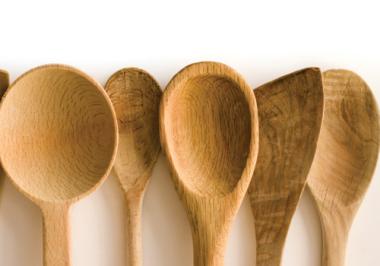Though there are still many products and processes that wouldn’t be possible without it, in many ways, the world’s romance with plastic is well past the honeymoon period.
Polycarbonates used to make many of the items from which we eat and drink have been found to contain endocrine (hormone) disrupters such as Bisphenol A (BPA), which can stimulate the growth of cancer cells, has been linked to recurrent miscarriage in women and can cause genetic damage in children. Exposure to phthalates in polyvinyl chloride (PVC) has been linked to cancer, infertility, premature breast development in girls and genital birth defects in boys.
The levels of plastic particulates in the Pacific Ocean have tripled in the last 10 years, and scientists anticipate a further increase in the next decade, especially now that China has come online as a full-blown consumer society. Moreover, in the region known as the Central Pacific Gyre, where ocean currents swirl to create a “dead zone,” a patch of discarded plastic has been measured as large as the state of Texas and may be, according to estimates, as large as the United States.
Many health-conscious and ecologically-minded people, companies and organizations are making efforts to reduce or replace plastic use in their lives and businesses, returning to materials like glass and stainless steel as well as embracing more recyclable and biodegradable materials.
Some companies have developed products made out of biodegradable substances that mimic plastic in both durability and malleability, using compounds developed from methane, hemp, corn, sugar, potatoes and other food starches—a growing industry that’s been informally christened “bioplastics.” The aim of the industry has been to replace plastic’s primary ingredient, petroleum, with something more renewable, biodegradable and abundant enough to be cheap.
Though this goal has proven elusive, researchers are getting closer to being able to produce commercially viable replacements. Calcutta University’s department of botany has isolated a completely degradable plastic polymer called poly beta hydroxy butarate (PHB) which can be “amply cultured inside the cells of bacteria abounding in the soil” and whose “organic quality makes for a wonderful substitute for commonly used but harmful plastics like polypropylene, PVC and polyethylene.”
The primary obstacle in bringing PHB to market has been production cost, as the price of glucose needed to culture the polymer makes it almost 30 times more expensive to mass-produce than conventional petroleum-based plastics. However, scientists are optimistic that this roadblock can be overcome by devising cheaper sources of production, which could be culled from agricultural and industrial waste.
So, what does all this have to do with food?
In the kitchen, much can be done to make the immediate world that you and your family live in plastic-free. Pyrex and Corningware both offer many products for cooking and food storage that are good alternatives to plastic. Alfi, Thermos Nissan and Sigg all manufacture water bottles that are glass-lined or all-stainless steel, and cooking utensils come in a wide variety of non-plastic materials that include wood, bamboo and stainless steel as well. San Francisco-based Branch, founded in 2005, has an impressive inventory of blankets, towels, aprons, tablecloths, washcloths and cups, bowls, plates, utensils and more made from renewable sources like hemp and bamboo. For picnics and large functions, the company also stocks a broad selection of disposable biodegradable cups, plates, bowls and utensils made from corn, potato starch and sugar cane fiber (www.branchhome.com). More great resources for reducing everyday plastic use and products including bags, toys and other items for babies and children can be found at http://lifewithoutplastic.com.



